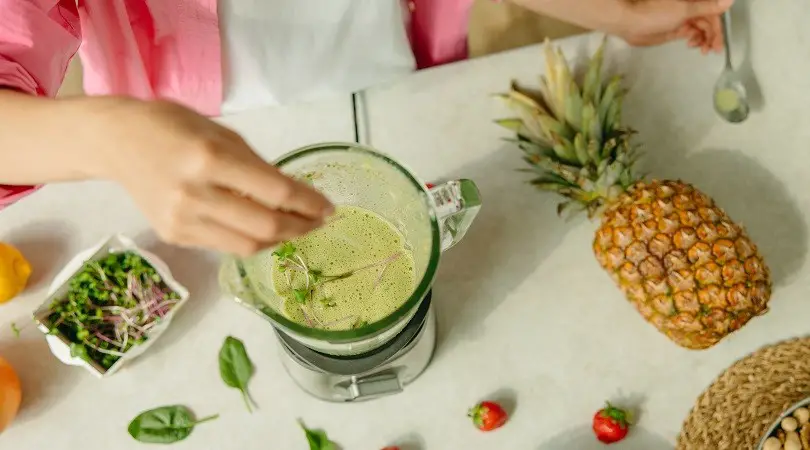Last Updated on January 6, 2025
The kitchen gadget world often buzzes with fierce competition, especially between appliances like the food processor vs. blenders. Both are all-stars in meal prep and make crucial contributions to many recipes.
However, when it comes to blenders, some may not know there are different types worth considering. This article will explore the pros and cons of four popular blender types to help you find one that best suits your culinary needs.
1. Hand (Immersion) Blenders
Hand blenders are handheld electric devices with a shaft and blade at the tip. These appliances can directly immerse into the ingredients, making them perfect for blending soups, sauces, purees, and other liquids.
Pros:
- Compact size: Hand blenders are convenient for small kitchens or limited storage space.
- Easy cleanup: Since they can be immersed in your container or pot, no separate blending jar is needed, meaning fewer dishes to wash.
- Precise control: You can blend directly in your cooking pot or container for precise blending amount and texture.
Cons:
- Limited power: Hand blenders may not provide enough power for crushing ice or blending harder ingredients like nuts.
- Potential splatters: When using hand blenders on shallow containers or with less liquid content, splattering can occur.
2. Countertop Blenders
Countertop blenders are the most common type of blender. They consist of a motor base, a blending jar (usually made of glass or plastic), and removable blades. These appliances blend frozen fruits, make smoothies or milkshakes, crush ice, and even grind grains.
Pros:
- Versatile: Countertop blenders can handle various tasks with their powerful motors.
- Large capacity: The blending jars can accommodate more significant amounts of ingredients, making them perfect for prepping meals in advance or entertaining guests.
- Array of settings: Many models offer speed settings and functions for precise control over blending consistency.
Cons:
- Space-consuming: The blender jars may not fit well in small kitchens.
- Noisy: Some countertop blenders can be quite loud, which may not be ideal in shared living spaces.
3. Personal (Single-Serve) Blenders
Personal blenders are designed for users who primarily make smoothies and shakes for one or two people. With generally a smaller motor and blending jar, these models can easily create individual-size beverages with minimal cleanup.
Pros:
- Portability: Personal blenders often come with a travel lid to take your smoothie to-go without transferring it to another container.
- Space-saving: Compact design makes them perfect for small kitchens or limited countertop space.
- Simple to use: With fewer settings, personal blenders are streamlined for quick on-the-go blending.
Cons:
- Limited functionality: These appliances may struggle when handling tougher tasks or larger batches of food.
- Durability concerns: Personal blenders, particularly budget-friendly models, may have a shorter lifespan due to smaller motors or cheaper components.
4. High-Performance Blenders
High-performance blenders are the epitome of versatility and strength. They offer advanced features and can handle nearly any blending task. Commonly used in professional settings, they make quick work of processing ice, nuts, seeds, and even whole fruits.
Pros:
- Delivers professional-quality results with its high-powered motors
- Built to last, featuring durable, heavy-duty construction
- Extremely versatile for a range of blending tasks beyond just smoothies and shakes
- Offers a wide range of speeds and settings for precise control
Cons:
- Takes up a significant amount of counter space due to its size
- Can be louder than other blender types
Blenders have come a long way since their inception in the early 20th century. Today, blenders come in various types designed to accommodate specific needs and preferences. Consider your budget, blending goals, and available storage space when choosing a new blender.








